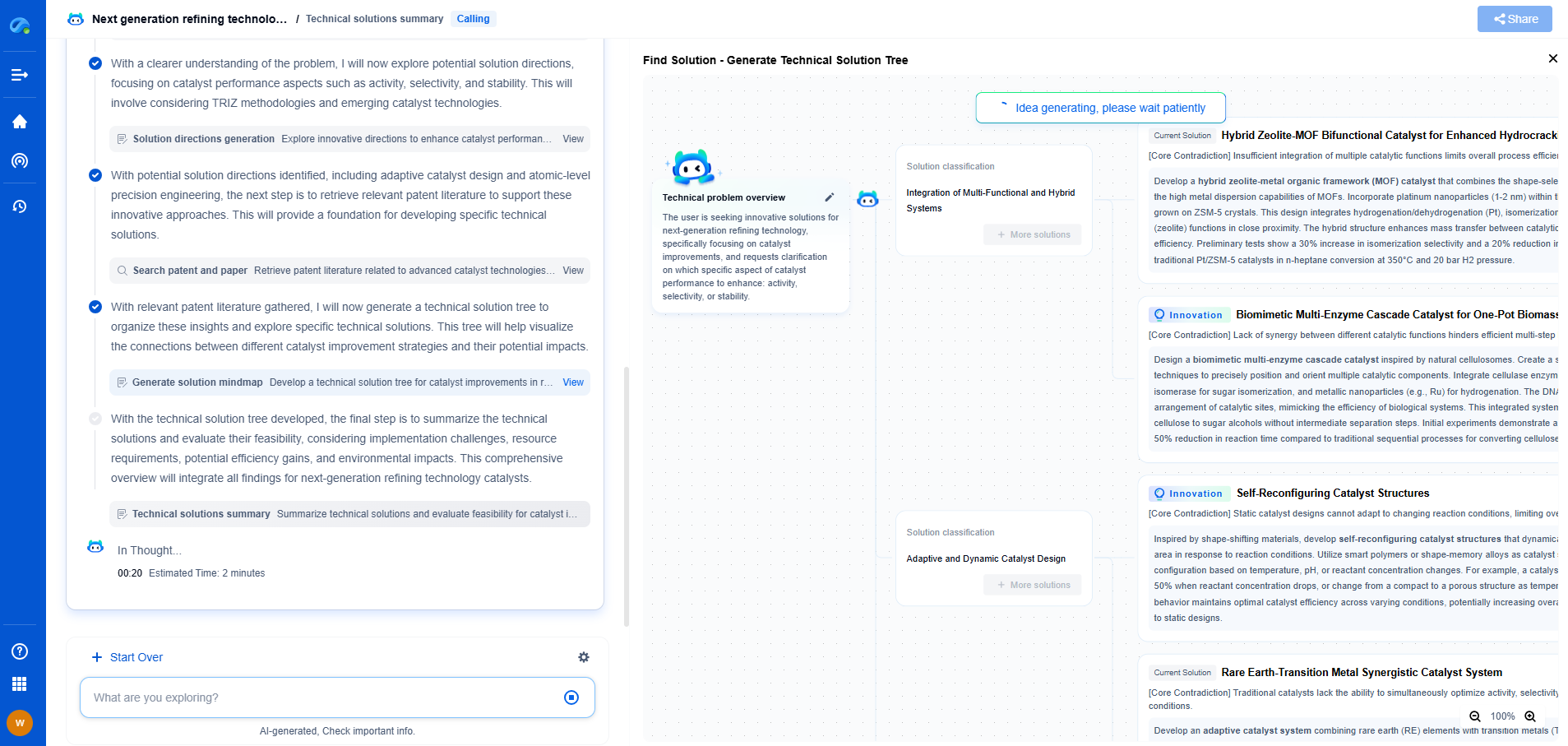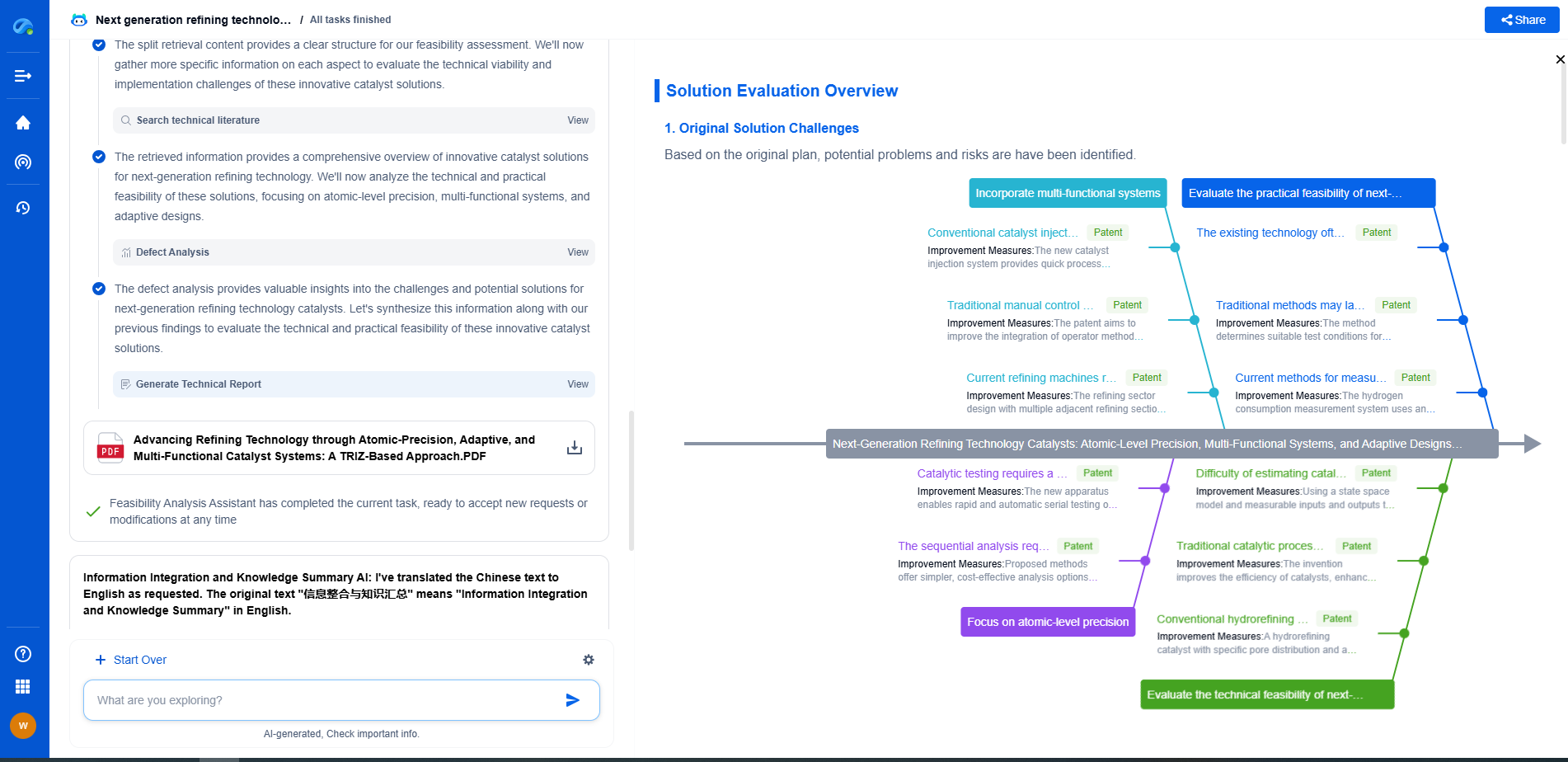Lactide vs Glycolide: Which Is Better for Medical-Grade Biopolymers?
JUL 3, 2025 |
Lactide and glycolide are both key components in the production of medical-grade biopolymers, primarily known for their application in bioresorbable sutures, drug delivery systems, and other medical devices. Understanding the unique properties and applications of each can help determine which is more suitable for specific medical applications.
Lactide: Properties and Applications
Lactide is derived from lactic acid and is known for its biocompatibility and biodegradability. Its polymer, polylactic acid (PLA), is widely used in the medical field due to its excellent mechanical properties and ability to degrade into naturally occurring metabolites.
PLA can be tailored to degrade over varying timeframes, making it ideal for applications such as bone fixation devices and sutures. The slow degradation rate of lactide-based polymers is beneficial for applications where long-term support is necessary before being resorbed by the body.
Glycolide: Properties and Applications
Glycolide, derived from glycolic acid, is often polymerized to form polyglycolic acid (PGA), another significant biopolymer in the medical industry. PGA is noted for its superior strength and faster degradation rate compared to PLA. This makes it particularly useful in applications requiring rapid resorption, such as fast-healing sutures and temporary tissue scaffolds.
Additionally, glycolide-based polymers have high crystallinity, which contributes to their strength and allows for a controlled degradation process. This feature is crucial in applications where the polymer must maintain structural integrity over a specific period before breaking down.
Comparing Biocompatibility and Degradation
Both lactide and glycolide demonstrate excellent biocompatibility, making them safe for use in medical applications. However, the key difference lies in their degradation rates. Lactide degrades more slowly, taking months to years, whereas glycolide offers a faster degradation timeline from weeks to months.
This difference is pivotal when choosing which polymer to use. In applications requiring prolonged support, such as orthopedic pins or plates, lactide may be more advantageous. Conversely, in scenarios where rapid healing and absorption are needed, glycolide's quicker breakdown is preferred.
Mechanical Properties and Strength
The mechanical strength of a biopolymer is crucial in determining its suitability for medical applications. Lactide's slower degrading PLA offers significant mechanical support over time, making it ideal for load-bearing applications. Meanwhile, glycolide’s PGA is known for its high tensile strength and quick structural breakdown, allowing it to be used in applications where immediate, robust support is needed but not for extended periods.
Environmental Impact and Sustainability
An important consideration in the medical field is the environmental impact of the materials used. Lactide and glycolide both offer sustainable options as they are derived from renewable resources. The production of PLA and PGA involves processes that minimize environmental impact, aligning with the growing demand for eco-friendly medical solutions.
Conclusion: Which is Better?
Deciding between lactide and glycolide for medical-grade biopolymers depends largely on the specific requirements of the application. Lactide's slower degradation and robust mechanical properties make it superior for applications needing long-term support. Meanwhile, glycolide’s rapid resorption and high strength are better suited for applications where quick healing is paramount.
Ultimately, the choice between lactide and glycolide should be guided by the specific medical context, patient needs, and desired outcomes, ensuring that the selected biopolymer aligns with the overarching goals of sustainability, safety, and efficacy in medical treatment.
Transform Polymeric Innovation with Patsnap Eureka
From biodegradable polymers to high-performance composites, the world of polymeric compounds is evolving faster than ever—driven by the demands of sustainability, functional customization, and global IP competition. Whether you're exploring novel copolymer architectures, optimizing polymerization techniques, or tracking material patents in bioplastics, time-to-insight is everything.
Patsnap Eureka, our intelligent AI assistant built for R&D professionals in high-tech sectors, empowers you with real-time expert-level analysis, technology roadmap exploration, and strategic mapping of core patents—all within a seamless, user-friendly interface.
Whether you're working on next-gen packaging films, bio-based resins, smart polymers for electronics, or new thermal-resistant composites, Eureka accelerates your journey from idea to patent to product—with unmatched clarity and speed.
🔍 Experience how Eureka can power your polymer R&D with AI intelligence—start your free trial today and unlock the future of materials innovation.
- R&D
- Intellectual Property
- Life Sciences
- Materials
- Tech Scout
- Unparalleled Data Quality
- Higher Quality Content
- 60% Fewer Hallucinations
Browse by: Latest US Patents, China's latest patents, Technical Efficacy Thesaurus, Application Domain, Technology Topic, Popular Technical Reports.
© 2025 PatSnap. All rights reserved.Legal|Privacy policy|Modern Slavery Act Transparency Statement|Sitemap|About US| Contact US: help@patsnap.com

